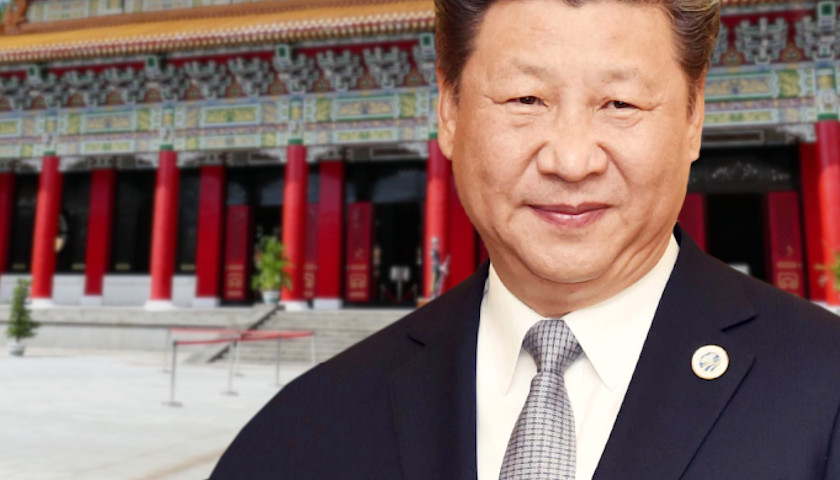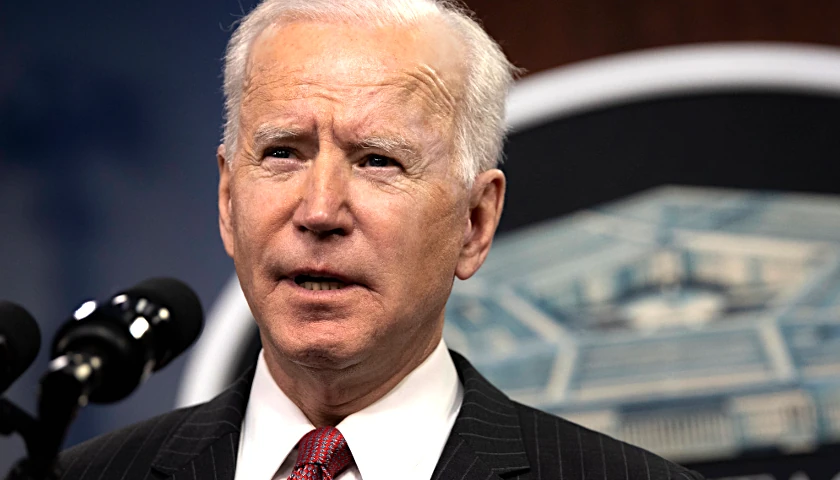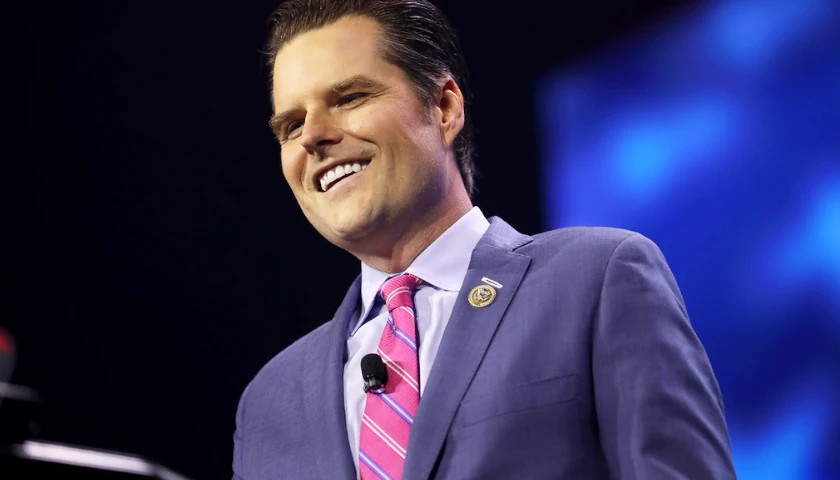by Willis L. Krumholz
In confronting COVID-19, there are two connected but distinct contagions—one medical and the other financial. We need a balanced and informed policy that grasps the seriousness of the medical problem and addresses it even at the cost of damage to the markets and economy.
But in addressing the disease we cannot inflict deep and lasting damage to our way of life: 35 percent unemployment is just not tolerable.
Faced with this dilemma, some have tried to minimize the danger of the disease, comparing it to a seasonal flu. They are wrong.
On the other hand, some advocates of taking all medical precautions are heedless of the suffering that a prolonged shutdown would cause—particularly to vulnerable groups among the elderly and unemployed. They are wrong, too. Each of the extremes in these opposing views is unbalanced and uninformed.
Further, at a time when there is an overriding need for national unity, the debate over governmental responses to COVID-19 is intemperate and politicized. This is also wrong.
It is pointless and destructive to play the blame game. America’s current health crisis is not the fault of President Trump or House Speaker Nancy Pelosi (D-Calif.). It cannot be pinned on Senate Majority Leader Mitch McConnell (D-Ky.) or New York Governor Andrew Cuomo.
Want to point an accusing finger? Point it at China.
We Should Reopen Soon
Without question, we should reopen the economy at the end of this month. People need certainty. A long term shutdown is not an option, and does nothing to stop the ultimate spread of the virus. The only purpose of a shutdown should be to prepare the economy for the eventual re-opening, which means stocking up on medical supplies and creating programs so at-risk persons can get the added help that they may need to maintain their distance from the rest of us.
It’s also true that there’s been some hysteria about the Wuhan virus. Surely, the initial estimates of deaths have probably been overstated. Yet—in order to make the case that we should reopen the economy sooner than later, which is more-or-less correct—many on the Right have been downplaying the danger of the Wuhan coronavirus.
For example, in a post by Scott Johnson on Powerline, former United Health Group general counsel Kevin Roche writes, “The average person has basically a zero chance of having a serious illness from the virus, even if they were in heavy contact with it.” Because of this, “the threat is actually low, consistent with a serious flu year.”
To come to this conclusion, Roche cites the example of the Diamond Princess cruise ship that experienced an outbreak as this whole thing was getting started:
There were over 3,700 passengers and crew on the vessel. Every one of them undoubtedly had constant, heavy exposure to the virus in close quarters. Using gold standard testing, less than 20% of the 3,711 people were positive, meaning they were actually infected. And out of those positive tests, a little over half were actually symptomatic. [Eight] people died, or about 2% of those with symptoms or .2% of percent of the vessel population.
But this approach is wrong. The Wuhan virus didn’t spread to all 3,711 people on board the Diamond Princess ship precisely because the ship locked down as soon as the outbreak was discovered. If Roche is arguing against a shutdown, he can’t assume only 20 percent of the population will get the virus.
The Death Rate Is Likely 5 to 10 Times Worse Than the Flu
This virus is so spreadable that most everyone will eventually get it, especially if we return to business as usual. That’s not an argument for an eternal shutdown, however. Even if we keep shutting down, it just delays the fact that the majority of the population will get this virus eventually, and things won’t be better until most people have already gotten the virus.
In fact, the most positive case right now is that many more people have the virus than authorities can know, and most of these people were asymptomatic, while the rest had symptoms that didn’t require hospitalization (you only get tested if you go in, and even then tests have been short in supply and rationed).
Again, all this is why we shouldn’t shut down forever, and we should use the shutdown to prepare for opening back up. Yet if we want to open back up, and be smart about when we do that, the correct question is: Out of those who were infected, how many experienced severe symptoms and what was the death rate?
Take the same Diamond Princess example. Of the 3,700 aboard, around 700 were infected. Out of the 700 infected, 400 were asymptomatic, and eight died, while around 300 experienced symptoms, often severe. Eight dying out of 700 is around 1 percent. And while the population on the cruise ship was relatively older, they were also relatively healthier and possibly received a degree of medical attention that many would not.
The answer as to the death rate is that on the ship it was about 1 percent, and looking at the broader population as low as 0.5 percent. But that’s still (ballparking a bit here) 5-10 times worse than the seasonal flu.
It’s not the bubonic plague, but it’s still 5-10 times worse than the flu, which kills in the tens of thousands every year. For those who experience severe symptoms, they often include severe fever, headache, and breathing problems. In bad cases the virus often hits a person with a fever, then comes back, several days after they recover from the initial fever, worse than before. While it’s true that being older greatly increases the risk of death from COVID-19, young and healthy people can still experience these severe symptoms.
Other odd symptoms abound. Many people lose their sense of taste and smell right before they get sick. While sick, many have severe joint and nerve pain much unlike the normal aches and pains of the flu. There are also some concerns the virus can have long-term effects, including on a person’s fertility and lung capacity.
Of course, many more experience mild symptoms or no symptoms at all. Yet Roche saying that “The average person has basically a zero chance of having a serious illness from the virus, even if they were in heavy contact with it,” and that “the threat is actually low, consistent with a serious flu year” is completely untrue. We are seeing otherwise young and healthy healthcare workers experience a disproportionate number of severe cases, precisely because they are being exposed to such large quantities of it.
Trump’s Response Is the Correct One
But the point isn’t to pick on Kevin Roche, who is a highly accomplished and intelligent man. A large number of other conservatives are needlessly downplaying the Wuhan virus.
On Fox News, for example, only a handful of personalities—including Tucker Carlson—have been consistent in taking the virus seriously from the get-go. This widespread downplaying of COVID-19 is both politically wrongheaded, and bad for the country—just like overblowing the virus is bad for the country.
It is politically wrongheaded because politicians, including Trump, have an incentive to err on the side of caution during times like these. Voters will forgive a bad economy in times of crisis, at least momentarily, but they won’t forgive a leader who doesn’t appear to be taking action in the face of death. That’s why Trump’s plan—to continue suppression measures through April and then move to mitigation—is the correct course of action. His rising approval numbers that the media is trying hard to ignore show this to be the case.
It’s also worth pointing out that the narrative suggesting the economy was perfect before the shutdowns came along is wrongheaded. America was sitting on the highest-ever corporate debt load to GDP before the virus hit, and the global economy has been slowing since 2017—this possibly explains why the market has reacted as it has. This isn’t Trump’s fault, and the president’s policies have kept the economy chugging along in spite of this. But business cycles, which seem to end about every 10 years, exist. And neither tax cuts—nor anything else for that matter—can eliminate them.
Aren’t Trump’s reelection odds now in shambles? It’s not unlikely that the economy, absent the virus, would have slowed throughout the remainder of this year. But now with the virus, the economy could actually come bouncing back (albeit from a lower level) during election-time. When it comes to elections, the direction of the economy is much more important than the absolute level. And the president can blame all economic problems on the virus . . . and China.
Which brings us to the most important point: Don’t miss the real story.
The Real Story—the China Menace
The real story is that this virus may have escaped Wuhan’s biosafety level-4 lab, one of the only such labs in the world, by accident. Here, Chinese scientists likely were sloppily messing around with things they shouldn’t have been messing around with, which included studying bat viruses.
The mainstream media has called this a conspiracy theory, but even a paper by researchers at the South China University of Technology in Guangzhou said that the virus “probably originated from a laboratory in Wuhan,” after a researcher was infected by a bat in the laboratory. That wouldn’t be the first time, as China had a SARS outbreak in 2004 that originated from a lab. And after this Wuhan virus outbreak, China just happened to pass a new “biosecurity” law.
Of course, the Guangzhou paper immediately was taken down by the Communist Party, and China vehemently denies the virus has anything to do with its biosafety level-4 lab in Wuhan. Yet this is the same government that forces abortions, interns millions of Uighurs, and packs warehouses in residential areas full of explosive chemicals. China’s government-run economy pollutes so much that a huge chunk of its farmland is toxic. The Chinese Communist Party is equally indifferent to human life, corrupt, dangerous, and sloppy.
Lab outbreak or not, once the virus started spreading late last year, Communist Chinese officials persecuted the medical professionals there who spoke out about it. China, after suppressing information about the outbreak and blatantly lying to the world, went on to blame a seafood market, the pangolin, and then the U.S. military. Although the U.S. media still repeat the seafood market claim, the Lancet called that explanation into question immediately.
China’s behavior and lies wasted the little time we had to react to the virus. We closed our borders to China, but we didn’t close them to Europe until it was too late. China spread the virus to Europe, and Europeans spread the virus to the United States. To top it off, we now know that Xi Jinping, China’s president, allowed 5 million people to leave Wuhan and infect the rest of the world.
Today, to add insult to massive injury, China is attempting to ship shoddy medical supplies to the rest of the world. European governments are saying that the equipment is uniformly “below standard or defective.” China has also launched meaninglessly small amounts of aid to boost propaganda efforts at home.
Be Angry at China, Then Do Something About It
Instead of directing our anger at the shutdowns or our president, we should direct our anger at the politicians—Democrats and Republicans alike—who let China become the menace that it is, and happily allowed countless American jobs to be outsourced there.
We don’t even make essential medical supplies in our own country anymore, including antibiotics. Incidentally, China has threatened to cut supplies of antibiotics to America unless we tone down the criticism.
It seems even our media is in the pocket of Communist China’s dictatorship. For example, they’ve consistently repeated Chinese propaganda about how well China is handling the virus compared to America, even though China’s infection stats are quite literally unbelievable.
Not focusing on the China threat is bad for the country. Our policymakers, at the least, should be frantically working to get the production of these critical supplies back onto American shores. Next, organizations that have close ties to China, and repeat Chinese Communist Party propaganda, should face repercussions—not just in the court of public opinion. This includes corporations, universities, and media outlets.
Finally, America should be rethinking the benefits of globalization, all the more after this crisis. That doesn’t mean totally abandoning the rest of the world, it means the launch of a new working-class conservatism and middle-class capitalism here at home.
– – –




